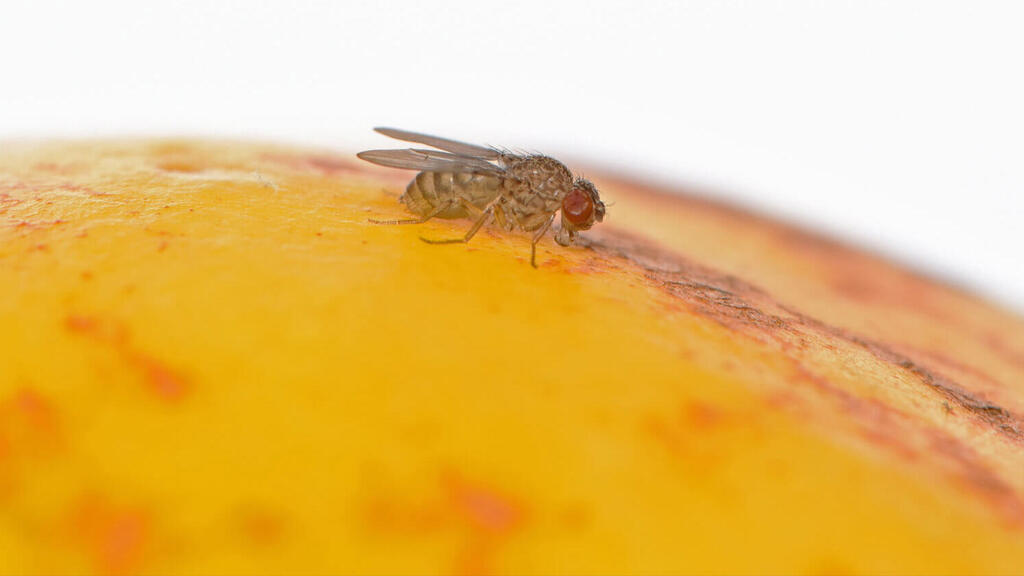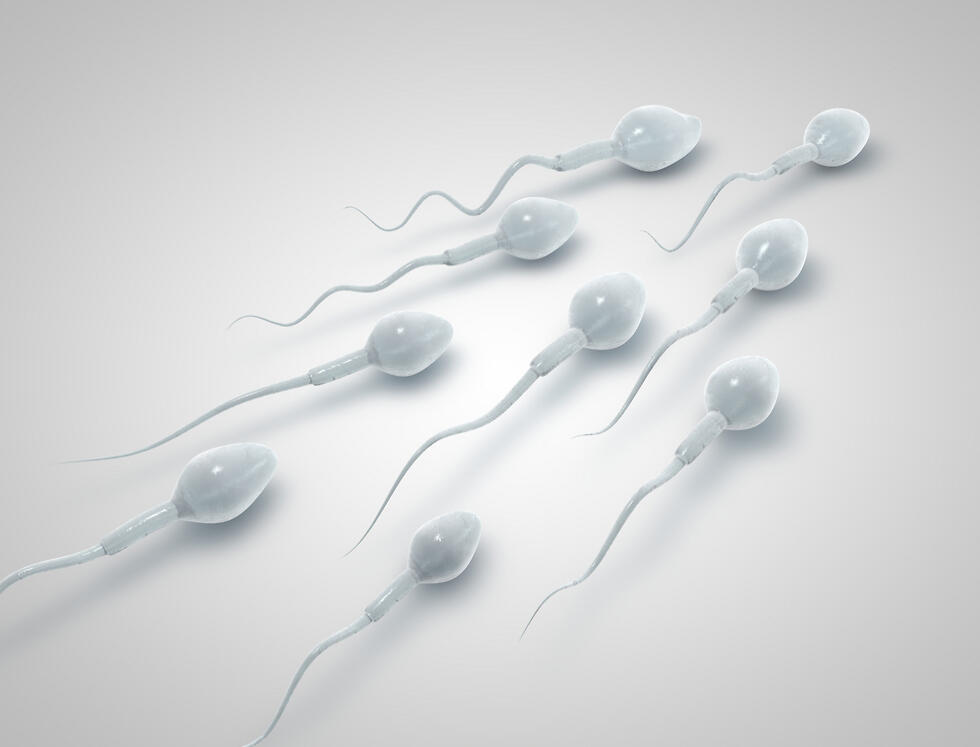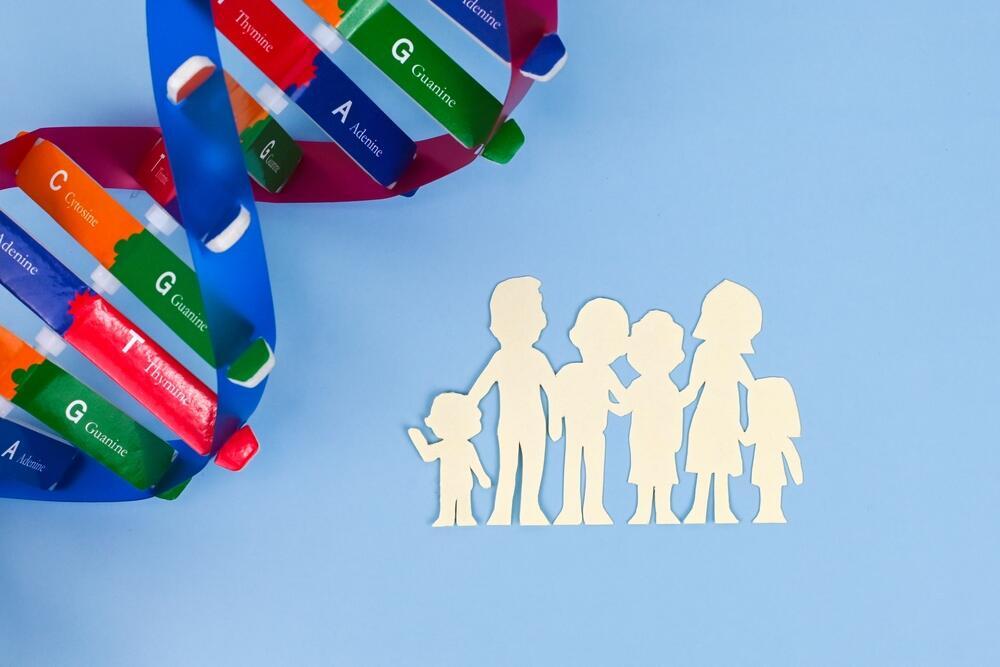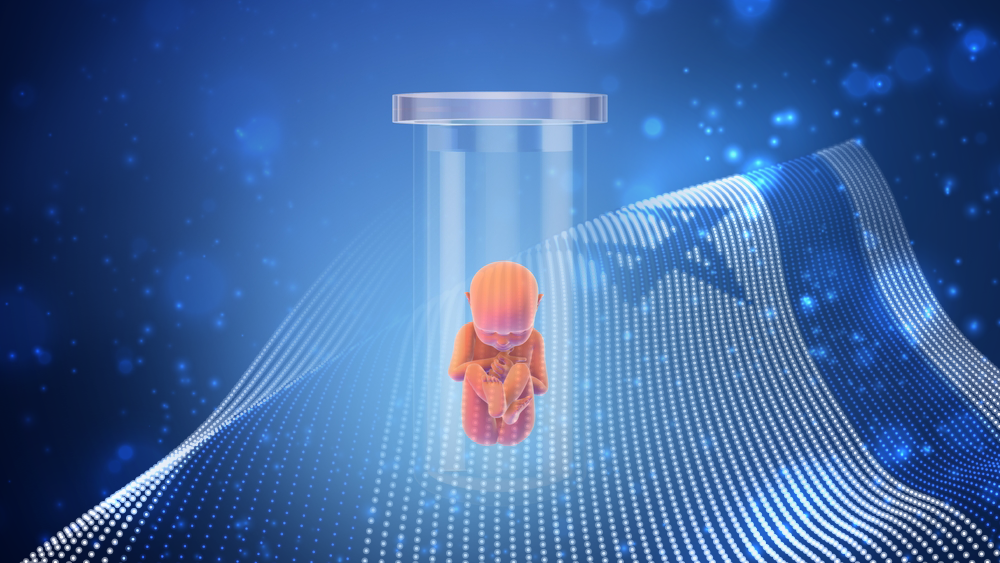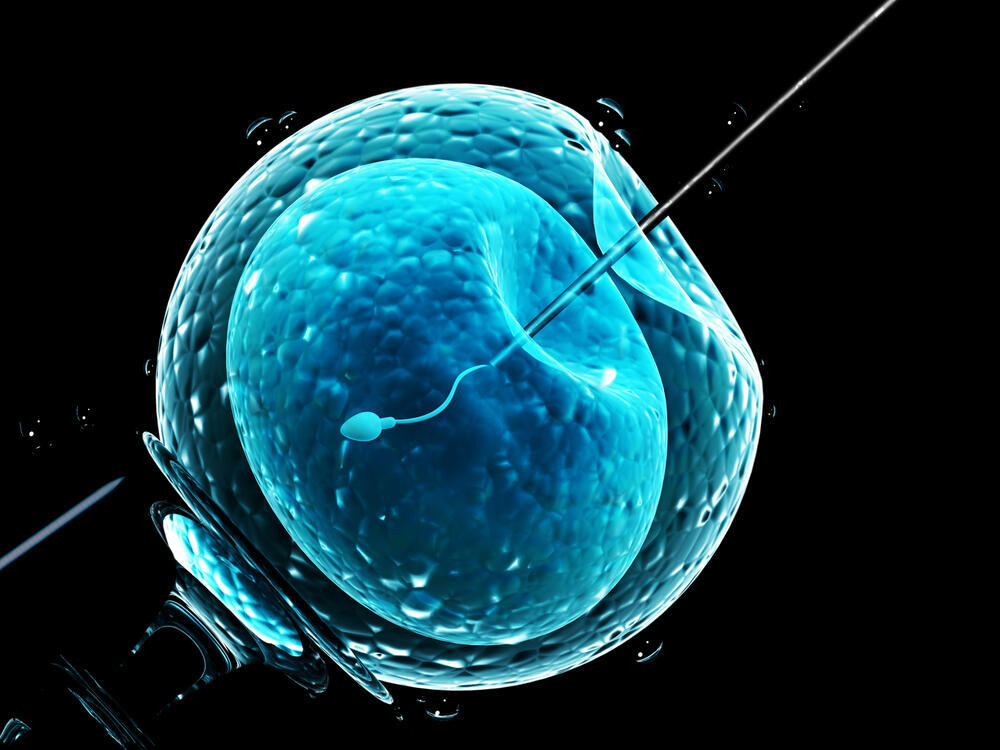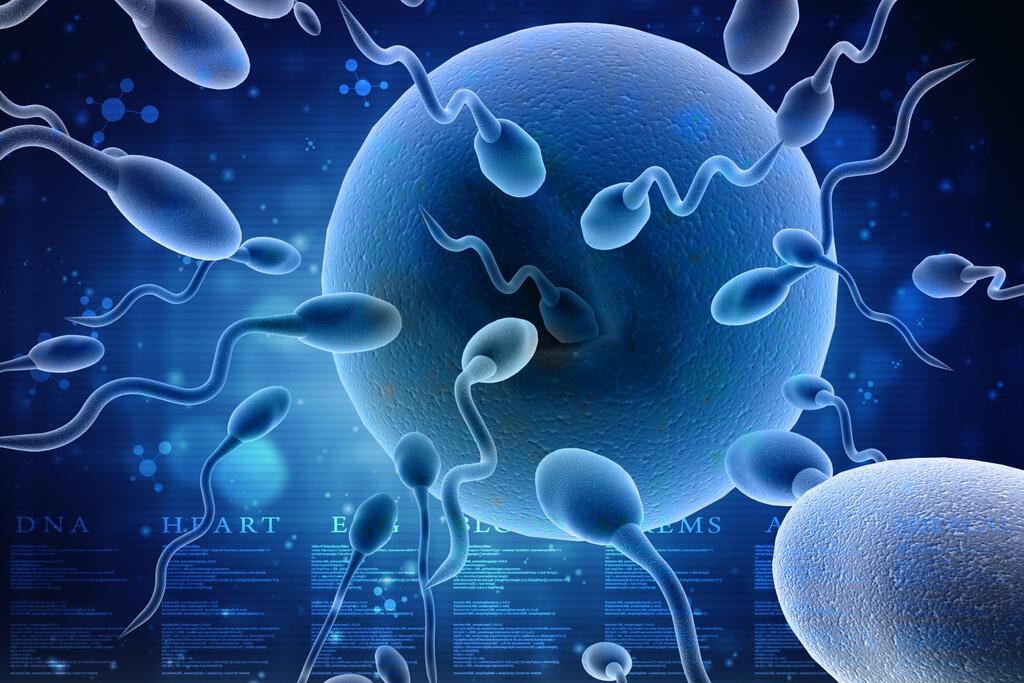Earlier this year, Dr. Alexis Sperling, a British biologist at Cambridge University, experienced an overwhelming surge of excitement as she witnessed the incredible phenomenon of virgin birth in flies. This was a moment she had eagerly anticipated for six long years. Through genetic manipulation, Sperling successfully created these flies using parthenogenesis, a process where offspring are produced without fertilization or mating.
Read more:
Reflecting on the moment, she exclaimed, "I couldn't believe my eyes when I saw them! It was actually happening." In an interview with financial publication Calcalist, she described the experience as an enduring journey, mostly undertaken independently, as if she was playing games in the garage.
Sperling is part of a group of pioneering researchers who are revolutionizing our understanding of the intricate processes of reproduction. Their endeavors involve manipulating genes to induce virgin birth, combining egg cell materials from different women, generating human embryos from stem cells in laboratories, and even producing eggs from male body cells or sperm from female body cells. While much of this research is still in its early stages, the biotech industry is already abuzz with excitement.
It has attracted substantial investments from prominent figures such as Elon Musk, owner of X (formerly Twitter), Anne Wojcicki, the CEO of 23andMe (formerly married to Google founder Sergey Brin), and cryptocurrency billionaire Brian Armstrong. In our world today, we not only have fatherless flies but also actual human babies (yes, actual children) created from the genetic contributions of three parents (We’ll get back to that).
Sperling acknowledges that her research has elicited strong reactions from some individuals. She recounts how people question its purpose and even devise various conspiracy theories. One commenter went as far as likening her to Oppenheimer, the father of the atomic bomb, which deeply affected her. However, she believes such reactions stem from a lack of understanding rather than genuine criticism.
In simple terms, how can this benefit mankind?
"When I embarked on this research, my primary aim was to unravel the mechanisms behind the activation of this unique form of reproduction in animals. It was driven by a desire to comprehend the marvels of creation itself. However, as findings of my research unfold, it becomes apparent that they have practical implications as well.
For instance, they can contribute to our understanding of how pests spread and impact agriculture and the environment. Like many aspects of basic research, the true potential of these discoveries will only be realized when other scientists choose to build upon them. It is a waiting game, filled with anticipation for what future advancements may arise."
Parthenogenesis, which is the ability of organisms to reproduce without fertilization, is not a new phenomenon in nature. Plants, insects, and many reptiles, including bees, chickens, crocs, and sharks, are capable of parthenogenesis. The research conducted by Prof. David Glover, a renowned geneticist from the California Institute of Technology, aimed to prove the mechanism of virgin birth is supported by a genetic factor, and then "copy" it to a different species of flies that are incapable of parthenogenesis. Flies, being a common, old, and inexpensive laboratory animal, were the perfect candidates.
For the study, which was published last month in the journal Current Biology, Sperling acquired no less than 220,000 flies. After genetically modifying the genome of the Drosophila mercatorum species, she found its corresponding gene in the Drosophila melanogaster species, and then successfully altered and activated the gene in this species. The offspring resulting from this process (virgin birth only produces females) were able to reproduce further through both male fertilization and virgin birth.
Although Sperling identified the genes involved in the process in flies, it is uncertain whether their counterparts in other animals will work in the same way. "It will need to be examined to know," she says. "It is likely to be possible in insects, but it is highly unlikely to occur in animals that do not have virgin birth to begin with."
Basically, there will never be virgin birth in humans?
"I wouldn't say never, because you can never know for sure. However, there are several processes in the body that prevent it, with various different marks in the male and female genomes that complement each other to ensure the correct genetic expression in the offspring. In essence, it would require a tremendous number of alterations that would make the process very rare and problematic, to the point of preventing it. So far, animals born through such a process, like mice, have not been healthy. Nevertheless, there are many benefits to studying this mechanism in other animals. It is important to understand how other animals reproduce because if we do things that promote their parthenogenesis, then it is important to understand these processes."
What are some examples?
"A typical example is the tomato leafminer, a harmful insect found in Britain and Brazil, which has likely developed parthenogenesis due to exposure to a specific pesticide. This is something that we, humans, most likely caused, and it is not an isolated case. Almost any pesticide can cause it, unintentionally encouraging parthenogenesis."
7 View gallery
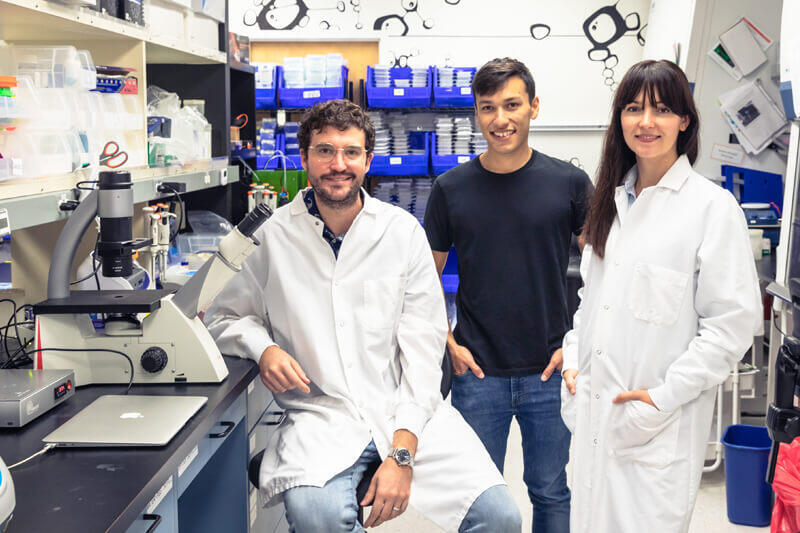

According to Krisiloff, the idea of a female biological clock can be eradicated
(Photo: Christopher Williams)
What is the problem with that?
"Continuous selection where there are no males will lead to the ability to reproduce only through parthenogenesis. It's a bit like antibiotics: if you use them too much, they will kill everything except what they cannot, and what survives will become completely resistant to them. And if we use substances that promote parthenogenesis in pests, we will end up with a population of pests capable of parthenogenesis. Therefore, the entire mechanism of parthenogenesis needs to be studied."
Father, Mother 1, Mother 2
In 2016, the scientific world was shaken by the birth of a child in Mexico who was born to three parents. The baby's mother carried a genetic mutation responsible for Leigh syndrome, a disease that affects the nervous system and causes early death. The source of the problem lies in a defect in the mitochondria - the energy-producing structures in cells - which carry very little genetic material. Therefore, the innovative solution implemented in this pregnancy was Mitochondrial Replacement Therapy (MRT) - a medical procedure in which an egg is taken from the mother, the nucleus is removed from the egg cell, and it is then implanted into a healthy woman's egg, from which the nucleus has been removed.
Today, one in every 6,000 infants is affected by mitochondrial disorders, and since that Mexican baby, several dozen babies have been born through MRT in the UK, Greece, Mexico, and Ukraine. "The media calls it 'three-parent baby technique,' but honestly, that's a misconception in my opinion," says Dr. Dagan Wells, a genetic diagnosis specialist from the University of Oxford. "It's important to remember the human body has 20,000 genes, and only a few of them, about 0.5%, are found in the mitochondria. They are also not the genes that give us any of our characteristics. They simply perform the chemical process of energy production."
And yet there is genetic material outside the cell nucleus, so the donor may have an impact on the fetus.
"It is an undeniable reality that a small quantity of mitochondria will be transmitted along with the chromosomes," he acknowledges. "Nevertheless, the proportion of the patient's mitochondria in such a scenario is exceedingly minute, consistently remaining below 1%."
What are the risks?
"Prior to human implementation, extensive research has been conducted on animals, providing us with a high level of confidence that no issues will arise. However, there exists a rare complication that raises concerns - a phenomenon known as "reversal" wherein the recipient's mitochondria begin dividing multiple times, instead of the donor's mitochondria.
"As a result, the resulting egg contains a greater quantity of the recipient's mitochondria. This occurrence can be attributed to variances in the DNA segment of the two distinct types of mitochondria, an interaction between the mitochondria and nuclear DNA, or other factors. Hence, it is imperative to closely monitor these children over the long term to ensure their well-being."
Every man can have an egg inside
The most imaginative reproductive technology currently under research is likely IVG (In Vitro Gametogenesis), which involves creating reproductive cells - eggs and sperm - from adult body cells in the laboratory. The pioneers of this technology are the Japanese biologists, Prof. Mitinori Saitou from Kyoto University and Prof. Katsuhiko Hayashi from Kyushu University. In 2016, they made headlines when their "Nature" journal announcement conveyed they successfully transformed tail skin cells of mice into eggs, which led to the birth of healthy mouse pups.
"The Japanese researchers found a way to take stem cells and direct them to become gamete cells, which are cells that produce reproductive cells, and at the end of the process, obtain eggs or sperm," explains Prof. Eli Adashi, an expert in reproductive biology at Brown University (formerly Dean of the Faculty of Medicine and Biology). He hosted a scientific conference dedicated to this technology in May. "They conducted experiments in mice, then in monkeys, and recently there is preliminary information about the possibility of achieving the same in humans. It hasn't happened yet, but the technology is on the verge of realization, and the field of extracorporeal reproduction will never be the same."
The IVG technology is based on another groundbreaking scientific discovery, for which researchers Prof. Shinya Yamanaka and Sir John Gurdon were awarded the Nobel Prize in Medicine in 2012. They succeeded in "rejuvenating" adult human connective tissue cells into stem cells, which are cells that have not undergone final differentiation into a specific tissue type, and therefore can become any cell in the body. "The central contribution of Saitou and Hayashi is that they took this system from scratch to a point where we now know what is required to take unsorted cells and convert them into eggs and sperm," says Prof. Adashi.
The technology is still relatively in its infancy, and Hayashi stated in an interview with "DW" last March that only about 1% of the mouse embryos created in the experiment survived. Nevertheless, the industry surrounding this technology is advancing rapidly. The most prominent startup in this field is Conception, based in California, founded by Matt Krisiloff, who assisted in the establishment of OpenAI.
"This technology can erase the concept of a biological clock for women," says Krisiloff to ‘The Economist’, a British weekly newspaper that focuses on current affairs, international business, politics, technology, and culture. "It will open the door for women to have children at later ages, and it will be very exciting. In so many countries, family planning is happening at increasingly older ages, and this can give us a few more years."
"The latest and fascinating twist in this story is the possibility of taking a stem cell from a male and turning it into an egg," says Prof. Adashi
In Israel, there are also those who work on a model of gene editing: Prof. Jacob Hanna from the Department of Molecular Genetics at the Weizmann Institute of Science is leading a research effort that develops a synthetic human embryo model to serve as a source for transplantable cells, such as eggs or blood cells, and has already undergone peer review. "In IVG, they try to create eggs from manipulated cells, and they add hormones to them in an arbitrary dosage and timing," explains Hanna. "In contrast, we are creating an embryo model that has only other tissues that are important and affect egg development, and the embryo model itself produces hormones naturally."
The success of this research in humans will have revolutionary implications. Firstly, it will pave the way for external fertilization, a market that generated over $23 billion last year and is responsible for 2% of births in the United States. This is because the current medical process involves significant suffering for patients - egg retrieval, which requires hormone injections beforehand, is a painful procedure - and yields a limited number of eggs (12-15), while IVG technology could produce an unlimited number of eggs without hormones and discomfort.
And that's just the tip of the iceberg. "The latest and fascinating twist in this story is the possibility of taking a stem cell from a male and turning it into an egg," says Adashi. "This is revolutionary, especially for same-sex couples, who currently can only have a child with the donation of an egg that does not carry the DNA of either of them. Thus, in principle, they will be able to have a genetically related child of their own. They will still need a woman to serve as a surrogate for pregnancy, but it is a tremendous breakthrough."
This was also the motivation for Krisiloff to establish Conception: "As a gay man, I had a personal motivation to promote research that would allow people like me to have genetically related children."
Are we on route toward purifying race?
Revolutionary reproductive technologies raise many ethical issues that may generate social transformations - not all of them positive. In his book "The End of Sex and the Future of Human Reproduction", which deals with IVG, American bioethicist Prof. Henry Greely from Stanford University predicted that within 20-40 years, most babies in the Western world will no longer be born as a result of sexual relations.
The "traditional" way will mostly be preserved for people in developing countries, for teenagers engaging in unprotected sex, and for those who choose romance as their ultimate goal. "I think that if this technology works and is deemed safe, it will be a blessing for millions of people," says Greely. "Of course, there are risks, as with any technology, but overall, in my opinion, this is one of the safest breakthrough biotechnologies for our society."
Why do you think most babies will be conceived through IVG?
"Due to its health benefits. Today, we know about 6,000 debilitating genetic disorders, and we can avoid them by choosing from an unlimited number of embryos at our disposal. We already do this today through preimplantation genetic diagnosis (diagnosis of embryos before physical fertilization), but it can only identify one or two disorders, and you don't have many options because in most cases, a couple will have 1-3 embryos, and that's it.
"IVG means that it is easier to produce embryos because the production of eggs is easier, the number is larger, and the ability to choose a better embryo is improved. The process also eliminates the painful procedure of extracting eggs, which accounts for 80% of the cost and 99% of the effort and risk. Therefore, in my opinion, this technology will be widely used.
"The result will be that parents who use it will have children who almost certainly will not have any of these 6,000 disorders. This doesn't mean they won't have other conditions like brain inflammation or RSV, but it will alleviate the fear of muscular dystrophy or Tay-Sachs."
Do you stand behind your forecast, that in a few decades people will prefer to have children through IVG rather than through sexual relationships?
"This is indeed a bold forecast, and it seems that the further end of the range is more plausible. However, yes, I estimate the Japanese group will reach the proof of concept, and then we will go through approximately ten years of safety trials, followed by regulatory approvals. I don't see a biological reason why it wouldn't work, but then again, biology is peculiar. I estimate the first to use the technology will be those with genetic conditions in the family, and then people who want genetically-related children but are unable to due to a lack of eggs or sperm, or because they are a same-sex couple."
What are the dangers of this technology?
"The most obvious exploitation is stealing someone's cell and turning it into sperm or an egg. Currently, stealing an egg or sperm is not a simple matter, but stealing someone's cell is very easy. Just think, every time you touch something, you leave behind cells, and while most of them may be dead, some of them are alive. Every time you spit, every time you go to the bathroom - those are your cells that you spread to the world.
Another serious concern is the degradation of eugenics - the improvement of the race by eliminating anything undesirable, which goes far beyond disease. There are arbitrary considerations: Short children, redheads, and even children on the autism spectrum. "I'm not worried about such degradation," says Prof. Hanna. "It's only because of the fear that someone will detonate a nuclear bomb that nuclear physics research is not prevented, which has tremendous advantages for the future of humanity in the field of energy and space. I believe in regulation."
Krisiloff further emphasizes that "genetic screening for diseases is a positive thing because preventing them will save lives and a lot of suffering, and trying to prevent them is a positive thing. The use of technology for various types of cosmetic selection is definitely not something that society should engage in."
Others might use it for cosmetic selection.
"Conceivably, but I don't think it's something a single doctor can simply develop on their own. Significant resources will be required, at the level of governments or very large organizations, because it involves highly intensive research processes. And of course, a larger social dialogue will be necessitated around the issue."
Greely isn't quite as rosy-eyed about the prospects. "The first anticipated trend is that parents will utilize technology to prevent the birth of children with disabilities, and this is precisely what they will do. Assessing whether this is morally right or wrong presents a more challenging question. Advocacy groups for the rights of individuals with disabilities will undoubtedly oppose this, and rightfully so. Nevertheless, I believe the ultimate decision should rest with parents rather than governments.
"The second anticipated trend is that the wealthiest individuals will prioritize the creation of 'super-babies'. However, I don't believe this will become a reality within the next 50 years, if ever, due to our limited understanding of the genetic variations involved, particularly concerning brain patterns.
"It is conceivable we may make some advancements in selecting embryos with higher potential and perhaps have some ability to predict certain behaviors and strengths to a lesser extent. However, the complexity of the brain and its susceptibility to environmental influences may mean that achieving this level of control will only be possible in another century. As for events occurring in a hundred years, I prefer not to speculate as it is too distant from my realm of knowledge."


